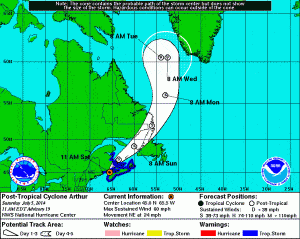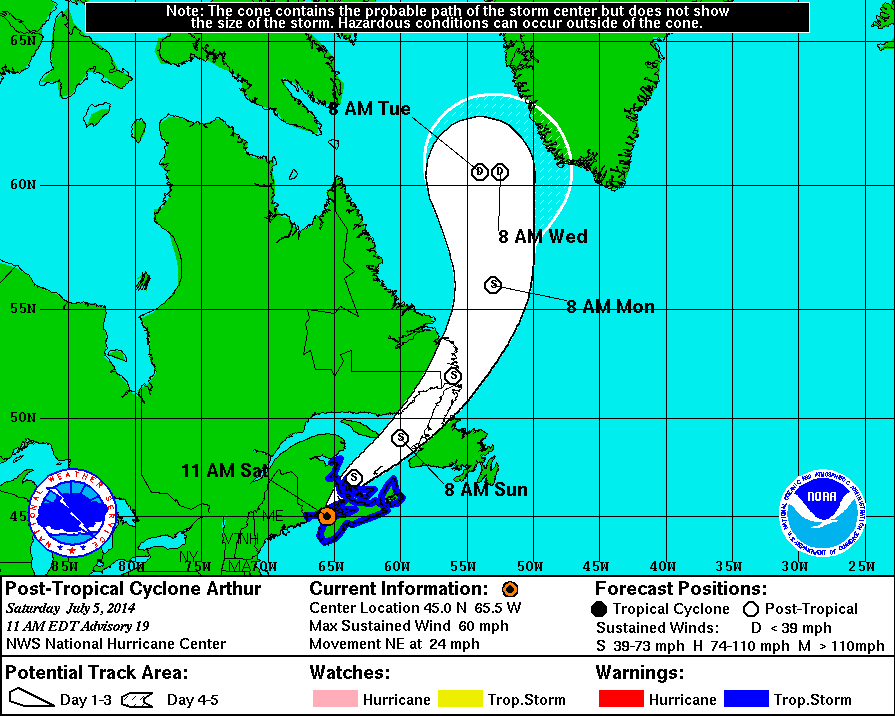Proving far less damaging than feared, Hurricane Arthur left tens of thousands of people without power Friday in a swipe at North Carolina’s dangerously exposed Outer Banks, then brought lousy Independence Day beach weather to the Northeast as it veered out to sea.
Forecasters predicted the storm would weaken before its center moves over western Nova Scotia in Canada early Saturday.

Arthur struck North Carolina as a Category 2 storm with winds of 100 mph (160 kph) late Thursday, taking about five hours to move across the far eastern part of North Carolina.
About 40,000 people lost power, and the rush of water from the ocean on one side and the sound on the other side buckled part of a North Carolina highway in a spot on Hatteras Island that was breached in Hurricane Irene in 2011.
No injuries or deaths were reported.
By Friday night, the hurricane had weakened to a Category 1 storm with 75 mph winds. Its center was about 75 miles (120 km) east-southeast of Chatham, Massachusetts.
While the Northeast wasn’t expected to take a direct hit, the rain from Arthur’s outer bands was disrupting the holiday. Fireworks displays in New Jersey and Maine were postponed until later in the weekend. Tropical storm warnings were in effect for coastal areas as far north as Cape Cod, Massachusetts. Tropical storm watches and warnings were in effect for Nova Scotia and New Brunswick in southeastern Canada.
(Associated Press writers Martha Waggoner in Raleigh, North Carolina, Skip Foreman in Charlotte, North Carolina, and Philip Marcelo in Boston contributed to this report.)
___
Was this article valuable?
Here are more articles you may enjoy.


 Report: Vehicle Complexity, Labor ‘Reshaping’ Auto Insurance and Collision Repair
Report: Vehicle Complexity, Labor ‘Reshaping’ Auto Insurance and Collision Repair  EVs Head for Junkyard as Mechanic Shortage Inflates Repair Costs
EVs Head for Junkyard as Mechanic Shortage Inflates Repair Costs  Viewpoint: The Impact of Behavioral Health on Workers’ Comp
Viewpoint: The Impact of Behavioral Health on Workers’ Comp  California Chiropractor Sentenced to 54 Years for $150M Workers’ Comp Scheme
California Chiropractor Sentenced to 54 Years for $150M Workers’ Comp Scheme 